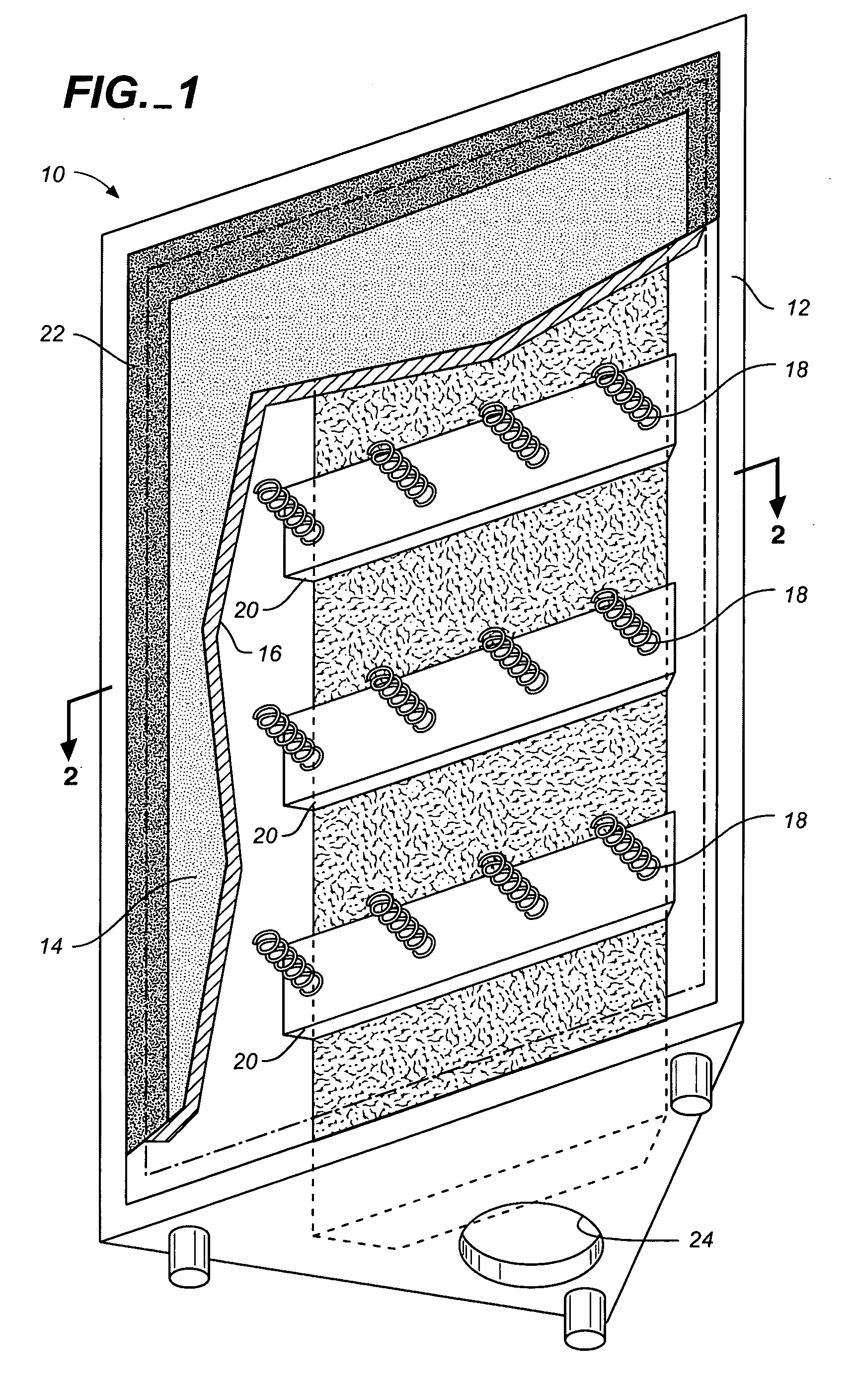Room mode bass absorption through combined diaphragmatic & helmholtz resonance techniques
a diaphragmatic helmholtz resonance and combined technology, applied in the field of acoustics, can solve the problems of inability to place acoustical treatment, resistive absorption is not an effective standing wave absorption method, and the material depth and area is not large enough to achieve the effect of reducing peak and dip frequency response errors, improving absorption and total room mode attenuation
- Summary
- Abstract
- Description
- Claims
- Application Information
AI Technical Summary
Benefits of technology
Problems solved by technology
Method used
Image
Examples
Embodiment Construction
[0032] Referring to FIGS. 1 through 2, wherein like reference numerals refer to like components in the various views, FIG. 1 is a front perspective view of an acoustical bass absorber apparatus 10 of this invention; and FIG. 2 is a cross-sectional view thereof. Apparatus 10 includes a cabinet or housing portion 12 defining an internal volume. The housing 12 includes a pistonic diaphragm resonance 14 including a front plate or rigid planar member 16 attached to one or a plurality of metal springs 18. One or more cross supports 20 secure the other end of the spring(s) 18 within the housing. Rubber gasket 22 forms an airtight seal around the entire perimeter of the front plate / housing interface. A Helmholtz resonance port hole and tube 24 is contained in the housing 14 and coupled to the pistonic diaphragm resonance 14.
[0033] One embodiment of the inventive apparatus was motivated by the need for a custom bass absorber to attenuate room modes in a home theater installation. In this pa...
PUM
 Login to View More
Login to View More Abstract
Description
Claims
Application Information
 Login to View More
Login to View More - R&D
- Intellectual Property
- Life Sciences
- Materials
- Tech Scout
- Unparalleled Data Quality
- Higher Quality Content
- 60% Fewer Hallucinations
Browse by: Latest US Patents, China's latest patents, Technical Efficacy Thesaurus, Application Domain, Technology Topic, Popular Technical Reports.
© 2025 PatSnap. All rights reserved.Legal|Privacy policy|Modern Slavery Act Transparency Statement|Sitemap|About US| Contact US: help@patsnap.com



